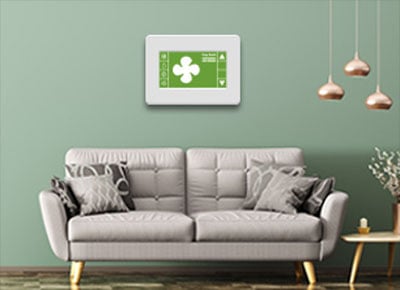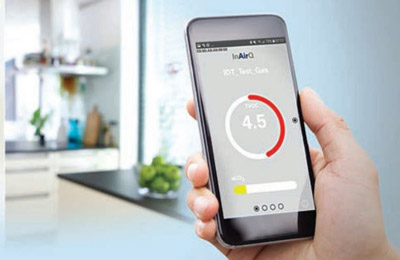Air quality systems that monitor and automate actions on our behalf are accelerating in the market thanks to technology convergence. Smart homes and buildings now provide IoT connectivity via communications protocols, such as Thread, ZigBee, Bluetooth®, and 6LoWPAN. In addition, mature technologies now have low-power capabilities, miniature packaging and integrated intelligence. With all these features coupled together, these innovative solutions provide humidity, air quality and temperature data that are analyzed to take recommended actions based on the environment. These products that are coming to the market will soon become commonplace in our homes and buildings.
This technology convergence helps solve key problems in maintaining health and wellness. When we are at home or work, the need for individual comfort and healthy air must be supported by systems in these buildings. If the humidity is too high, it will create mold, and if it is too low, we become uncomfortable. High levels of volatile organic compounds (VOCs) are unhealthy and are responsible for illnesses, particularly for those with breathing disorders, such as children and the elderly. Recirculating indoor air or venting in outside air also has consequences both in energy efficiency and health.

Low-power solutions that run on batteries also benefit from this current technology convergence. The ability to place battery-operated modules with remote sensors in each room of the home or building has many benefits. This includes immediate monitoring of overall air quality that can be managed by a cloud-based application, notifying users through a smartphone of unhealthy air, or controlling smart damper systems that will act based on the environmental feedback, alerting users of leak detection in utility rooms, and detecting estimated CO2 in bedrooms and cooking gases in kitchens.
Let’s look at newer buildings as an example. These structures are usually airtight, so the air is vented out based on estimated usage by individuals and timing. However, this is often an inefficient means to provide healthy air systems, as it simply guesses the air quality, and in many cases, exchanges clean air for cold air in the winter or hot air in the summer months. By defining the air quality deliverables and power budget, a battery-operated system is a compelling option for implementing air quality systems into buildings.

Low-power technology innovations bring new products that benefit users at work and at home. When innovative technologies converge, as we are now seeing, a rapid expansion of new remote solutions becomes available. I’m excited to see the future of remote air quality solutions bringing comfort and health benefits to our environment.
Visit renesas.com/gas to learn more about gas sensor solutions.
